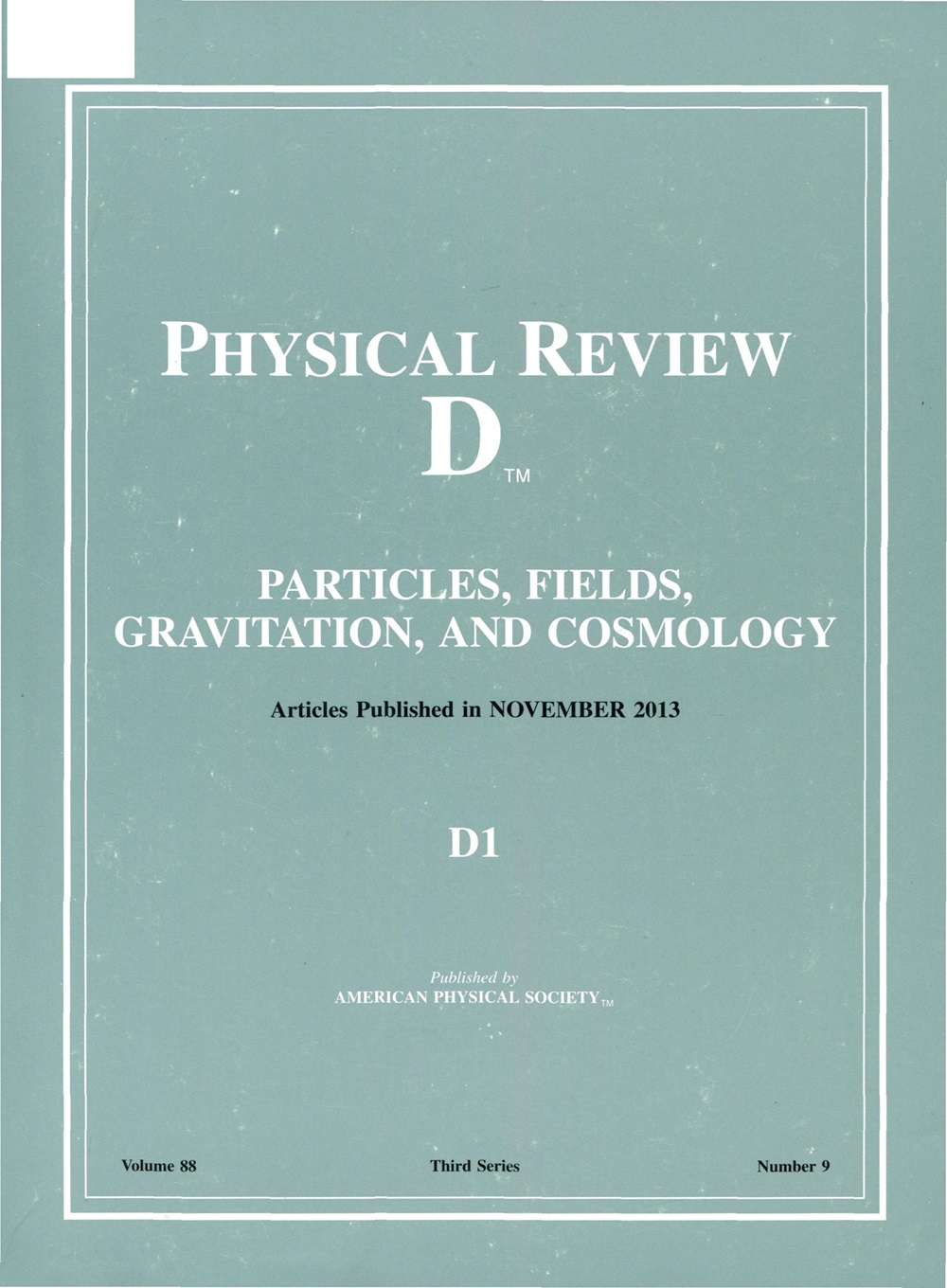IF 5
2区 物理与天体物理
Q1 Physics and Astronomy
引用次数: 0
摘要
最小暗物质是一种有吸引力的候选暗物质,因为它无需施加额外的对称性就能稳定下来。众所周知,SU(2)L 五子费米子可以作为最小暗物质的候选者,根据热生产机制预测,其质量约为 14 TeV。在这项研究中,我们把五子暗物质嵌入到非超对称的 SU(5) 大统一理论中。我们发现,在 O(1-10) TeV 尺度上需要两对彩色六元费米子才能实现规整耦合统一,统一尺度接近缩小的普朗克尺度。这些彩色六元费米子会变得不稳定,因为它们的相互作用会受到统一尺度的抑制。我们的模型可以通过对撞机实验中对彩色六元费米子的全面搜索,以及对最小暗物质的间接和直接探测方法进行检验。一旦最小暗物质方案得到实验证实,它将对弦理论的修改产生影响。 美国物理学会出版 2025本文章由计算机程序翻译,如有差异,请以英文原文为准。
Minimal dark matter in SU(5) grand unification
Minimal dark matter is an attractive candidate for dark matter because it is stabilized without the need to impose additional symmetries. It is known that the SU(2)L quintuplet fermion can serve as a minimal dark matter candidate, with its mass predicted to be around 14 TeV, based on the thermal production mechanism. In this work, we embed the quintuplet dark matter within nonsupersymmetric S U ( 5 ) O ( 1 – 10 ) TeV Published by the American Physical Society 2025
求助全文
通过发布文献求助,成功后即可免费获取论文全文。
去求助
来源期刊

Physical Review D
物理-天文与天体物理
CiteScore
9.20
自引率
36.00%
发文量
0
审稿时长
2 months
期刊介绍:
Physical Review D (PRD) is a leading journal in elementary particle physics, field theory, gravitation, and cosmology and is one of the top-cited journals in high-energy physics.
PRD covers experimental and theoretical results in all aspects of particle physics, field theory, gravitation and cosmology, including:
Particle physics experiments,
Electroweak interactions,
Strong interactions,
Lattice field theories, lattice QCD,
Beyond the standard model physics,
Phenomenological aspects of field theory, general methods,
Gravity, cosmology, cosmic rays,
Astrophysics and astroparticle physics,
General relativity,
Formal aspects of field theory, field theory in curved space,
String theory, quantum gravity, gauge/gravity duality.
 求助内容:
求助内容: 应助结果提醒方式:
应助结果提醒方式:


